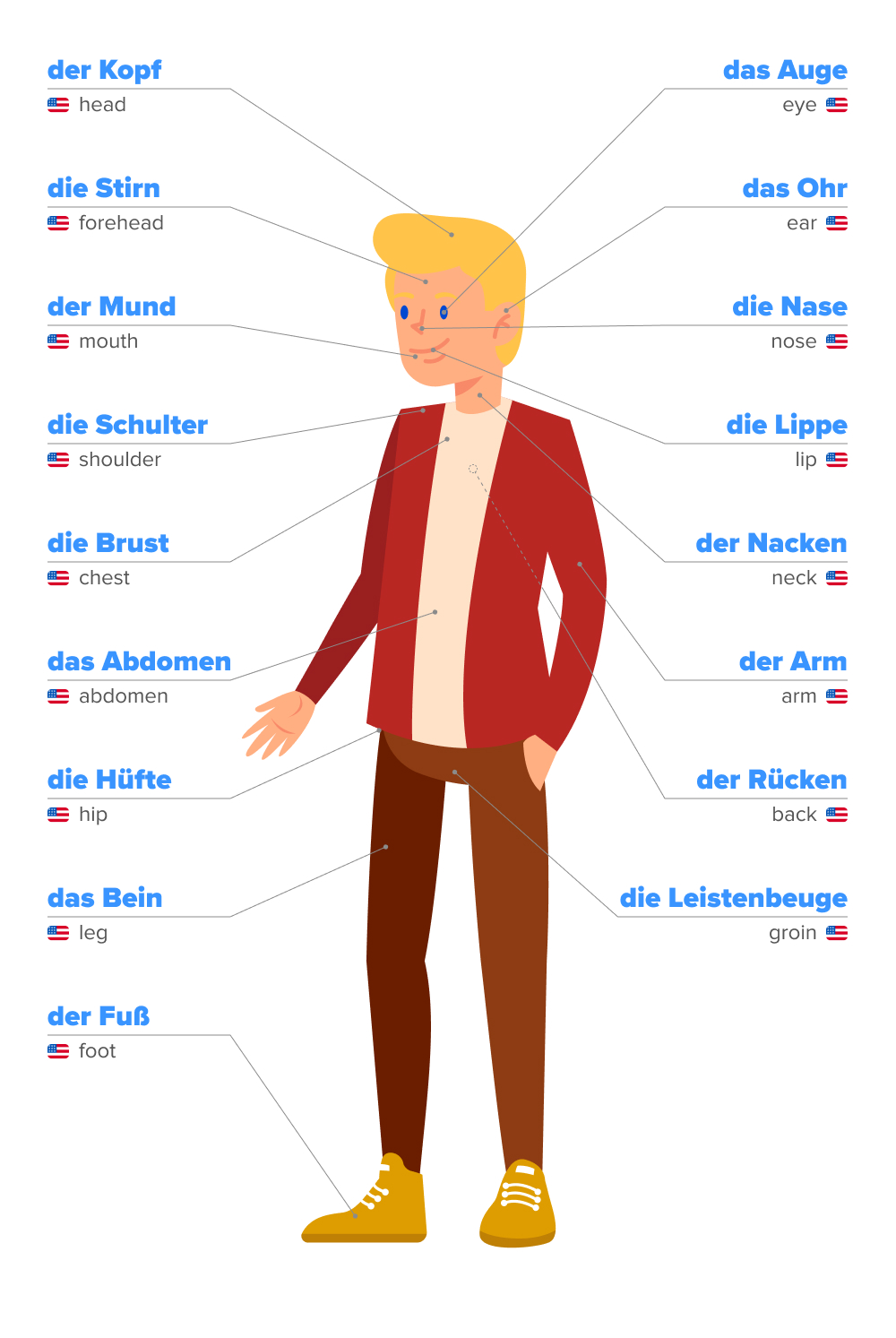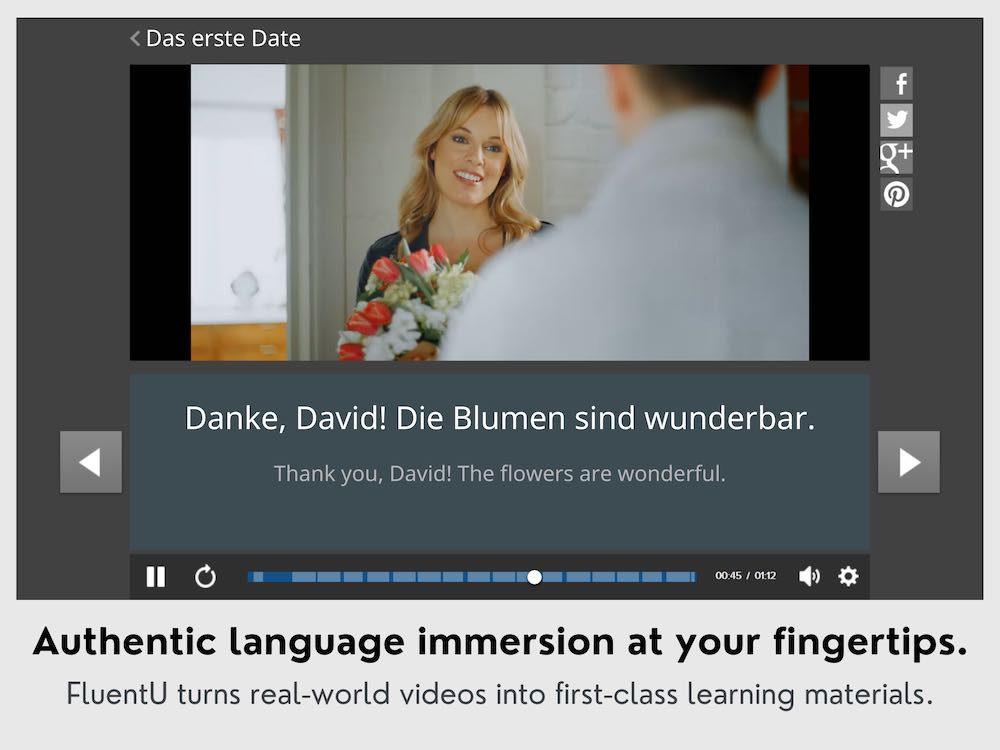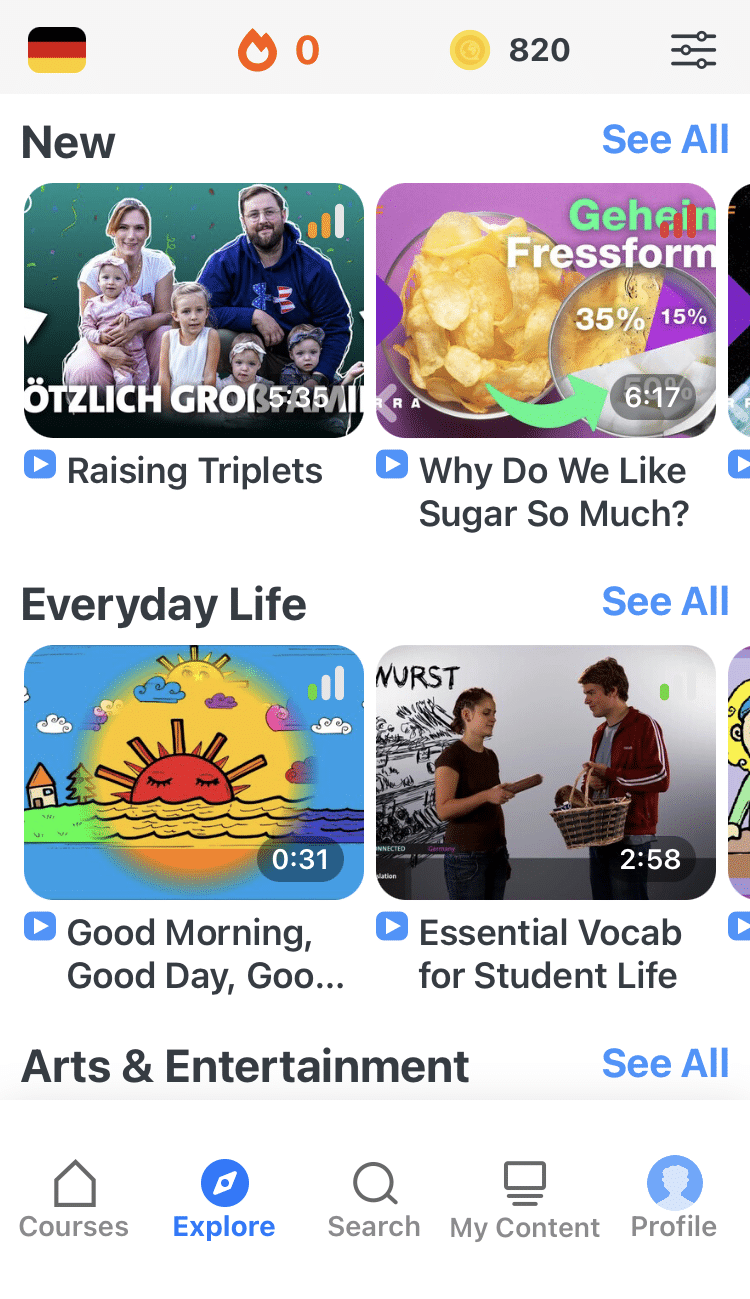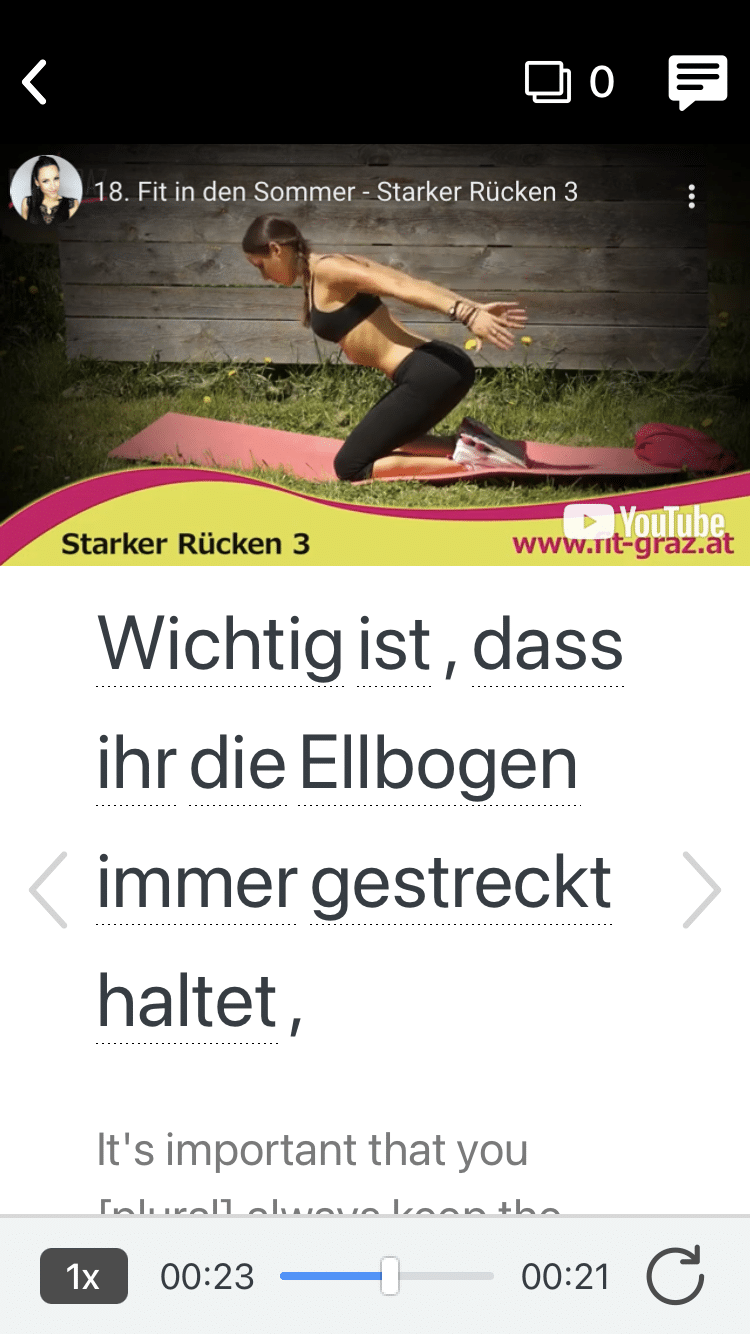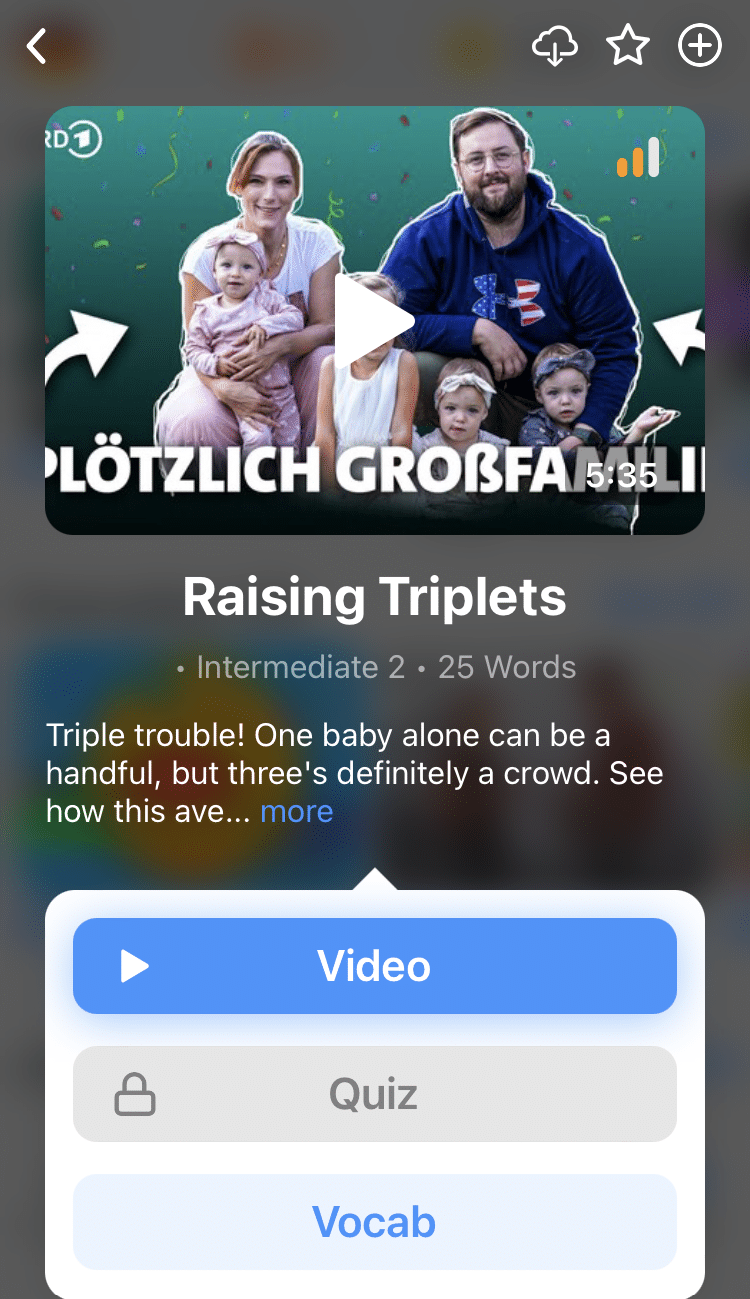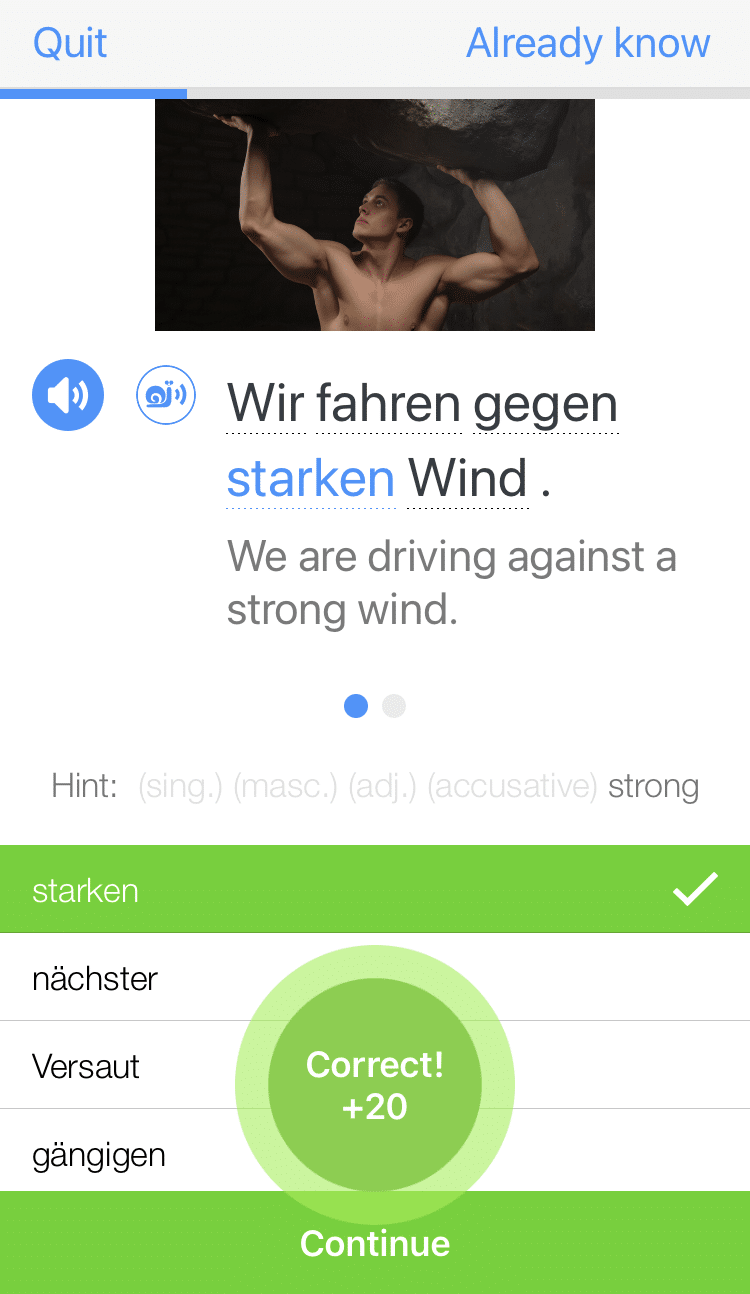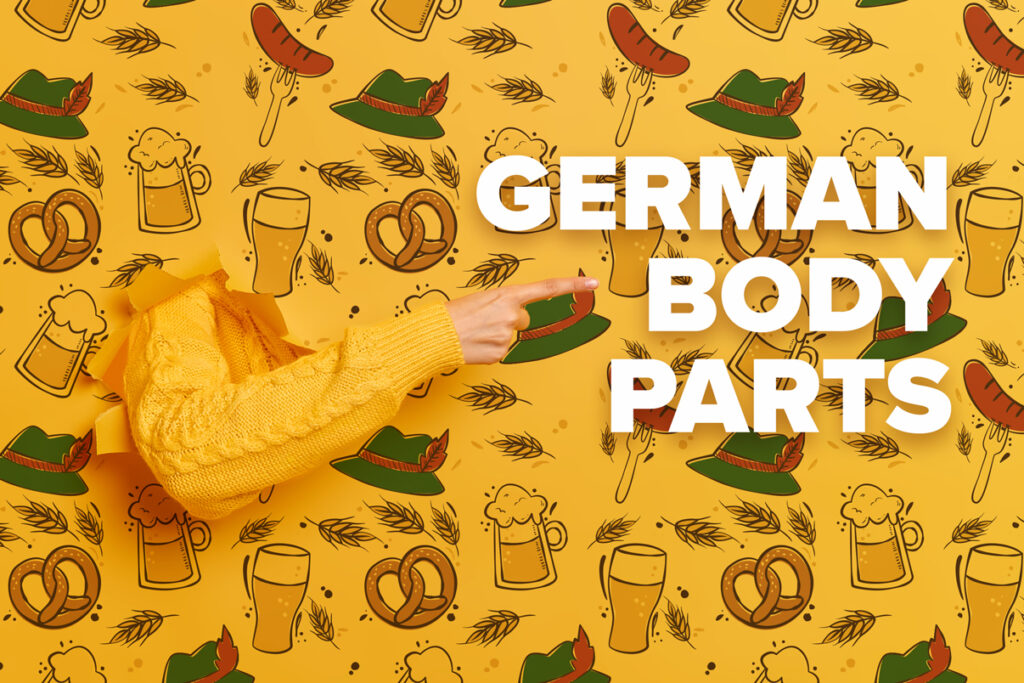
Body Parts in German
In this article, we’re going to talk about German vocabulary for the whole body.
From the top of your head to the tips of your toes, we’ll cover almost everything in between.
But don’t worry, this isn’t your middle school health class.
What follows might not be enough to get you into a prestigious medical college, but suffice it to say you’ll know the words to the song “Head, Shoulders, Knees and Toes” in German by the time we’re done!
Contents
- Body Parts in German
- A Quick Note About Possessive Pronouns
- Verbs Associated with Body Parts in German
- Adjectives Used to Describe Body Parts in German
- Where to Practice Body Parts in German
- And One More Thing...
Download: This blog post is available as a convenient and portable PDF that you can take anywhere. Click here to get a copy. (Download)
Body Parts in German
Main Body Parts in German
- der Kopf (head)
- das Auge / die Augen (eye/eyes)
- die Nase (nose)
- der Mund (mouth)
- das Ohr / die Ohren (ear/ears)
- der Nacken (neck)
- die Schulter / die Schultern (shoulder/shoulders)
- der Arm / die Arme (arm/arms)
- die Brust (chest)
- der Rücken (back)
- die Hüfte / die Hüften (hip/hips)
- das Abdomen (abdomen)
- der Hintern / der Po (butt)
- die Leistenbeuge (groin)
- das Bein / die Beine (leg/legs)
- der Fuß / die Füße (foot/feet)
Parts of the Head in German
- die Kopfhaut (scalp)
- die Stirn (forehead)
- die Backe / die Backen (cheek/cheeks)
- der Kiefer (jaw)
- die Lippe / die Lippen (lip/lips)
- das Kinn (chin)
Parts of the Upper Appendages in German
- der Bizeps / die Bizepse (bicep/biceps)
- der Unterarm / die Unterarme (forearm/forearms)
- das Handgelenk / die Handgelenke (wrist/wrists)
- der Daumen / die Daumen (thumb/thumbs)
- der Finger / die Finger (finger/fingers)
- der Fingernagel / die Fingernägel (fingernail/fingernails)
Parts of the Torso in German
- das Schulterblatt / die Schulterblätter (shoulder blade/shoulder blades)
- die Flanke / die Flanken (side/sides)
- der Bauch (stomach)
- der Bauchnabel (belly button)
- die Bauchmuskeln (abdominal muscles)
- das Becken (pelvis)
Parts of the Lower Appendages in German
- der Oberschenkel / die Oberschenkel (thigh/thighs)
- die Wade / die Waden (calf/calves)
- die Fessel / die Fesseln (ankle/ankles)
- die Ferse / die Fersen (heel/heels)
- das Fußgewölbe / die Fußgewölbe (arch/arches)
- der Zeh / die Zehen (toe/toes)
To remember these German vocabulary for body parts, you can make flashcards on FluentU.
FluentU takes authentic videos—like music videos, movie trailers, news and inspiring talks—and turns them into personalized language learning lessons.
You can try FluentU for free for 2 weeks. Check out the website or download the iOS app or Android app.
P.S. Click here to take advantage of our current sale! (Expires at the end of this month.)
A Quick Note About Possessive Pronouns
Possessive pronouns are the words we use to describe ownership. It’s like saying yours, mine and ours in English.
In German, possessive pronouns have either an accusative or dative ending. The possessive pronoun stems are as follows:
mein (my/mine)
dein (your/yours)
sein (his)
ihr (her/hers)
sein (its)
unser (our/ours)
euer (your/yours informal)
ihr (their/theirs)
Ihr (your/yours formal)
Depending on the case of the object in possession, you’ll choose either an accusative or dative ending.
Sometimes, however, you’ll need to use a reflexive verb and reflexive pronoun. We’ll speak a bit more about that next, but those are just a few things you’ll want to keep in mind as you talk about body parts in German.
Verbs Associated with Body Parts in German
We won’t get too much into reflexive verbs here, but know that they require a reflexive pronoun. Most reflexive pronouns begin with sich (himself/herself/itself) in their infinitive form. It’s these reflexive pronouns that direct the action back toward the speaker, showing possession. Just like possessive pronouns, there are accusative and dative reflexive pronouns.
Examples of non-reflexive verbs include:
brechen (to break)
waschen (to wash)
verletzen (to injure)
kleiden (to clothe)
tätowieren (to tattoo)
However, when used with body parts, many of these same verbs become reflexive. For example, you can say, “Ich wasche die Tasse” (“I wash the cup”), as well as “Ich wasche mich” (“I wash myself.”)
Adjectives Used to Describe Body Parts in German
Now, when you’re talking about body parts, it’s a good idea to know a few adjectives. Here are some that will help spice up your conversation:
sauber (clean)
schmutzig (dirty)
männlich (male)
weiblich (female)
heiß (hot)
kalt (cold)
nass (wet)
trocken (dry)
juckend (itchy)
brennend (burning)
schweißig (sweaty)
feucht (damp)
geschnitten (cut)
verletzt (injured)
klein (small)
mittelgroß (medium)
groß (large)
krank (sick)
gesund (healthy)
mager (skinny)
fett (fat)
Remember that adjective endings must match the case, gender and number of the body parts they’re describing.
Try to incorporate some of these adjectives into your vocabulary. After all, the song lyric “I like big butts and I cannot lie” (“Ich mag dicke Ärsche und ich kann nicht lügen”) wouldn’t be the same if it were only “I like butts and I cannot lie” (“Ich mag Ärsche und ich kann nicht lügen”).
Where to Practice Body Parts in German
In order to get the most out of the German body vocabulary we’ve included below, here are some resources you should take full advantage of:
- Deutsche Welle (DW) slideshow. Practice naming the body parts with this slideshow stocked with pictures. Both the singular and plural forms of each body part are provided. You can also check out the site’s other slideshow on strange German words used to talk about body parts—some of these wacky words might surprise you!
- Learn German with Herr Antrim YouTube video. Though this video is narrated in German, the provided pictures and animation of the popular Mr. Potato Head toy make it easy to understand. No purchase necessary—just bring a fun learning attitude!
- Quizlet flashcards. Flip through these flashcards to memorize the body parts in German.
- Expatica list of medical terms. Want to learn more about the body and all the medical terms associated with it? Consult this resource for a beginner’s list of German medical terms.
- Sporcle quiz. Choose from the provided German vocabulary list to match body parts to their English translations. See how fast you can name the body parts in German.
- german-games.net test. This multiple-choice test asks you to match the picture provided to one of the German words below it. Click the speaker icon next to each choice to hear it pronounced, and earn stars for each correct answer.
There you have it—the body parts in German, from the crown of your head to the tips of your toes!
Download: This blog post is available as a convenient and portable PDF that you can take anywhere. Click here to get a copy. (Download)
And One More Thing...
Want to know the key to learning German effectively?
It's using the right content and tools, like FluentU has to offer! Browse hundreds of videos, take endless quizzes and master the German language faster than you've ever imagine!
Watching a fun video, but having trouble understanding it? FluentU brings native videos within reach with interactive subtitles.
You can tap on any word to look it up instantly. Every definition has examples that have been written to help you understand how the word is used. If you see an interesting word you don't know, you can add it to a vocabulary list.
And FluentU isn't just for watching videos. It's a complete platform for learning. It's designed to effectively teach you all the vocabulary from any video. Swipe left or right to see more examples of the word you're on.
The best part is that FluentU keeps track of the vocabulary that you're learning, and gives you extra practice with difficult words. It'll even remind you when it’s time to review what you’ve learned.
Start using the FluentU website on your computer or tablet or, better yet, download the FluentU app from the iTunes or Google Play store. Click here to take advantage of our current sale! (Expires at the end of this month.)
